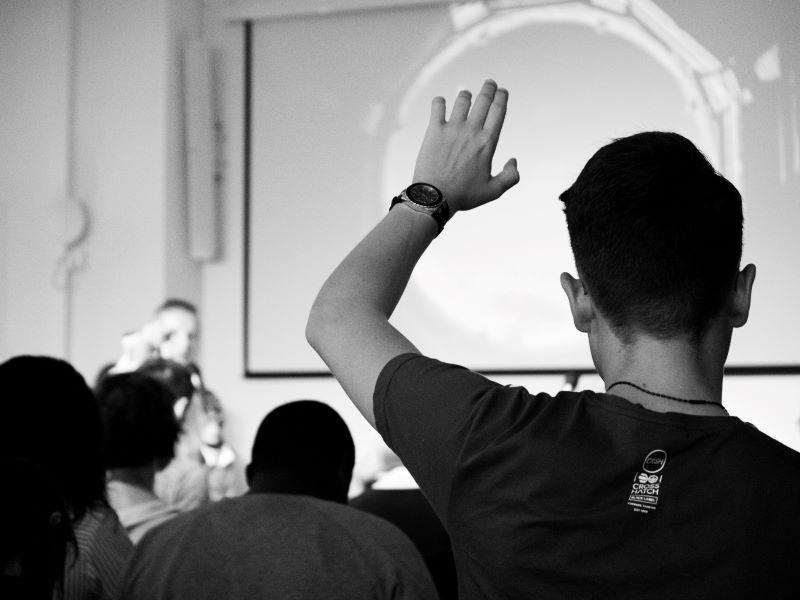Technology and the pandemic have amplified voices, accelerated innovation and forged new connections across campuses – and long may it all continue. But supporting faculty communities of practice and listening to students as co-creators will see that digital teaching thrives into the post-Covid future, according to a THE Campus task force.
The task force of digital learning experts from campuses across the US considered three questions – around barriers, ambitions and faculty needs when it came to embracing digital teaching methods – ahead of an in-person workshop at Digital Universities Week in May.
- Don’t lose sight of learning outcomes in pursuit of digital innovation, counsels task force
- Event: Digital Universities Week US |Agile Education for a Digital-first Future
- Digital Universities Week UK task force: put people at the heart of digital transformation
What are the sticking points to faculty adoption of digital teaching?
The task force identified competing priorities, innovation fatigue, uneven uptake of technology and an unclear cost-benefit balance as barriers that hinder faculty adoption of digital teaching tools. They also cited the challenge of maintaining the progress already achieved in the wake of the pandemic as some campuses championed a return to in-person teaching.
University IT departments can also unintentionally obstruct innovation, said Aisha Jackson, assistant vice-chancellor and assistant vice-provost of academic technology and student success at the University of Colorado Boulder. It happens particularly if faculty are “exploring innovative things that may not be offered by the central IT organisation”, she said.
She added that “great strides” had been made in putting books online, but while students had embraced recorded lectures as ways to mediate and supplement their learning, faculty often had reasonable questions about how recording was done and who had access to the materials.
The speed of change during the pandemic had left staff with much higher digital literacy (lowering one barrier) but burned out as they were often also tasked with supporting students, said Mary Ellen Wiltrout, director of online and blended learning initiatives and a lecturer in digital learning at the Massachusetts Institute of Technology (MIT).
“It wasn’t this purposeful design of courses,” she said. “It was thrown on people who weren’t trained, and they had to deal with really stressful conditions. So you can understand that they’re going to be resistant, too, like: ‘Why would I want to keep doing that?’”
Despite the obstacles, the group was quick to praise faculties’ openness to innovation. “The last two years have shown that faculty broadly, and certainly here at ASU, have done a remarkable job of pivoting,” said Lev Gonick, chief information officer at Arizona State University (ASU). He said moving forward was “about celebrating, embracing and finding out how to continue to support faculty on the journey”.
John Liu, digital learning scientist at MIT, said it was incumbent on digital learning experts within universities to ensure that faculty understood “the benefit from learning science and instructional design or engagement with students or course management” when it came to online teaching, and not just the cost of change.
Flat hierarchies made it difficult to mandate change, he said, so uptake ranged from enthusiastic adopters to those who had to be contacted individually when MIT changed its LMS, for example.
Professor Jackson said learning objectives were more important than universal adoption of a piece of edtech: “Not every technology is going to meet every learning goal, so it’s OK to not have adoption of a particular technology across the whole campus.”
What can be done now, and what are longer-term or blue-sky goals?
Whether it’s immediate shifts or long-term ambitions, the task force agreed that impetus for change was multidirectional and driven by myriad forces – from the market to student voice. Professor Jackson said using technology to support strategic goals around student success should be one of the new motivators for its adoption.
Dr Liu said the pandemic had “forced [universities] to rethink community and support…on a class level but maybe on a programme level” as well as to refocus on how teaching modes best served learning objectives. Developing ways for faculty to share resources within courses and eventually across the university was on his wish list: “How can we encourage them to use these to perhaps move towards modes of more active learning, blended instruction, flipped instruction?”
Technology could also be used to scaffold scale and hands-on learning to make it resilient to disruption, he said. “Perhaps it’s scaffolded types of instruction or increasing the learning interactions between groups or parties in the learning experience. All of that could be facilitated by the digital experience.”
The communities of practice that had sprung up amid the pandemic should be maintained, the task force agreed. “We have an enterprise Slack environment, and there are ongoing communities of practice related to instruction [and] scholarship of instruction, ongoing conferences enabled through Slack, as an example of continuing to build out from that work,” said Dr Gonick, whose institution offers 243 online degrees and “moved 6,000 faculty to an online environment in a matter of a week” when the pandemic hit.
The task force had a glimpse into the next generation of blended learning with ASU’s vision of “digital twin” spaces. “We’ll be letting students who are in a biology lab be joined in an immersive experience by learners in remote environments,” said Dr Gonick. The digital lab would be based on its live counterpart, and students will eventually be able to interact with one another “in a seamless way”. But right now “there’s just a lot of enthusiasm around playing”, he said.
Blended learning will continue to evolve, agreed Dr Wiltrout. “We’ve gotten past the hurdle or threshold that there’s enough peer pressure for people to continue using those tools. So even if a course tries to go back to paper exams or something like that, then TAs or students [will say]: ‘Why couldn’t this just be online?’” she said.
Universities must keep listening to students, said Professor Jackson. “We were very sensitive to understanding what students needs were during the pandemic and putting structures in place to support them,” she said. “And it’s recognised now that we need to always include student voice in everything we do.”
She cited UCB’s Buff portal as an example of a project that had been conceived, developed and iterated using student feedback.
Support for digital teaching could increasingly be embedded into departments, something MIT does through its Digital Learning Lab, said Dr Wiltrout. “We come together as a group to share ideas and, you know, commiserate sometimes, but we find that the faculty are more willing to work with us and trust us to do a project when it’s someone within their department that they know versus it being a central office or someone they’ve never met before.”
How can institutions create a conducive environment that supports faculty in adopting new digital teaching methods?
Networks of support, reward and prioritising evidence-based learning practices were identified as ways institutions can support faculty in the digital transformation of campuses.
“Hiring the right people with the right skills and the right ability to work with faculty” was crucial, said Dr Wiltrout. Faculty needed IT experts to understand their perspective and problems in order to “find ways to solve [them] in the right direction, because people don’t like to be forced to do something or feel like there’s pressure”.
Rewarding staff for participating in innovative teaching and learning, with incentives such as steps towards tenure, would also help to establish these activities as worthwhile for academic careers.
Funding emerged as an unsurprising incentive, whether that was MIT’s small seed funding or through UCB’s Innovation Incubator, which sponsors three- and four-year projects as part of its Center for Teaching and Learning.
“They’re exploring gamification, as an example, inclusive data science, metacognition and well-being,” said Professor Jackson. In these communities of practice (CoPs), faculty work alongside IT professionals as well as experts in assessment to ensure that learning is measured. “They like working with each other, alongside with the experts.”
Universities need to capitalise on communities of practice at all levels, said Dr Liu; leadership, peers, students and experts all have a part to play. “Leadership paints a vision, not staying the same but really continuing to ask: ‘What is the best new normal?’”
Faculty, he said, need to get out of their bubbles and work together because many of the learning problems or adoption of digital learning are not unique. Students should be brought in as collaborators, Dr Liu added. “We often talk about user-centred design in engineering or technology and how do you bring that understanding into teaching?” The final element is using learning experts to merge the understanding of the discipline and understanding of the learning sciences and instructional design. “That bridge is very important,” he noted.
Networks and teams are key to innovation and adoption at ASU, said Dr Gonick. In addition to Slack champions, “there’s a group of faculty and students who are working on second- and third-horizon futures activity”, which includes immersive space and stackable digital credentials, and a project to develop an LMS that will support a million online learners.
But it would be a mistake to focus too closely on technology itself. A culture that facilitated change and commitment to good teaching remained ever important. “The tool is not going to fix things,” said Dr Wiltrout. “You can see that at conferences organised by Zoom, and they schedule nine hours of straight Zoom. The tool alone is not the solution but the implementation and policies and everything else.”
Our task force members:
- Lev Gonick, chief information officer, Arizona State University
- Aisha Jackson, assistant vice-chancellor and assistant vice-provost of academic technology and student success, University of Colorado Boulder
- John Liu, digital learning scientist, Massachusetts Institute of Technology
- Mary Ellen Wiltrout, director of online and blended learning initiatives and lecturer in digital learning, MIT
Digital Universities Week US, co-hosted by MIT’s Abdul Latif Jameel World Education Lab, took place on 9-12 May 2022.
If you found this interesting and want advice and insight from academics and university staff delivered direct to your inbox each week, sign up for the THE Campus newsletter.




comment